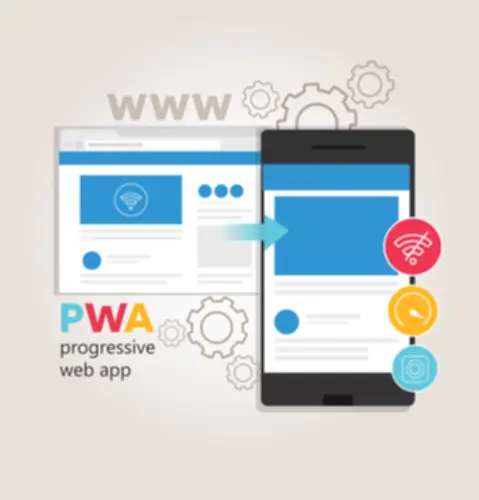This design permits containers within a pod to communicate effectively and share data seamlessly. A Kubernetes cluster is a set of interconnected bodily or digital machines, generally identified as nodes, that collectively provide the runtime setting for containerized applications. It acts as the inspiration for deploying, managing, and scaling container workloads efficiently. A Kubernetes cluster consists of control airplane nodes and employee nodes. Kubernetes is an open-source platform that automates the deployment, scaling, and administration of containerized applications. Developed by Google, Kubernetes has turn into the de facto commonplace for container orchestration.
When paired with a visualization software like Grafana, you acquire a comprehensive view of your cluster’s performance, enabling proactive identification and resolution of potential points. Cluster Autoscaling dynamically adjusts the dimensions of your Kubernetes cluster based on the useful resource requests of your deployments. When pods can’t be scheduled as a outcome of insufficient resources, the cluster autoscaler adds new nodes. Conversely, the autoscaler can take away nodes to avoid wasting costs if they are underutilized. This ensures that your cluster has the right amount of sources obtainable, optimizing cost-efficiency and preventing useful resource starvation. Kubernetes simplifies utility lifecycle management by allowing you to define the desired state of your application—the number of replicas, the container pictures, and the way updates must be rolled out.
It additionally means that your checks live as part of your infrastructure—they can scale, fail, restart, and be versioned similar to any other a half of your software. In this text, we’ll discover the testing challenges Kubernetes presents, how traditional methods fall brief, and the way tools like Testkube are serving to groups embrace a new, simpler strategy. Sadly, ConfTest doesn’t offer enough policy management energy. What if you need to execute a gaggle of insurance policies on one service and another on a different service? You’d nonetheless need a way to leverage the checks in the CI process while also grouping the policies.
Persistent Storage is storage that outlasts the life of individual Pods. It is a method of saving information in a method that it can be kubernetes based development accessed again sooner or later, even if the unique Pod has been deleted. This is crucial for functions that require knowledge to persist throughout software updates and restarts. Companies in Kubernetes are an abstract method to expose purposes running on a set of Pods as a community service. With Kubernetes, you don’t need to worry about networking and communication as a result of Providers permit your applications to obtain site visitors. Throughout a peak shopping season, the appliance experiences a surge in visitors.

It reduces the need for guide intervention and helps preserve excessive availability of purposes. Rolling updates are the default strategy to update the users’ applications. The Deployment updates the Pods in a rolling replace machine learning style to ensure that your utility remains obtainable even as it is being up to date with newer variations. Deployments are a higher-level idea that manage Pods and ReplicaSets.
Kubernetes Professionals And Cons
Kubernetes helps keep your software operating even if something goes incorrect. It can automatically place containers on wholesome machines, restart them if they crash, make copies (replication) to deal with extra users, and adjust the number of containers primarily based on demand (scaling). All of this helps your app repair itself and keep available while not having guide help. Virtualization allows better utilization of resources in a bodily server and allowsbetter scalability because an software can be added or up to date easily, reduceshardware costs, and much more.
- Without correct monitoring and logging, you might not notice the increased load until the application slows down or crashes, resulting in misplaced gross sales and a poor user expertise.
- This ensures that your cluster has the right quantity of sources obtainable, optimizing cost-efficiency and preventing useful resource starvation.
- The kube-proxy handles community communications inside or outside of your cluster—relying either in your working system’s packet filtering layer, or forwarding the site visitors itself.
The Model New Challenges Of Testing In Kubernetes
Learn all about Kubernetes (K8s), the open-source platform developed by Google, designed to automate containerized application deployment, scaling, and administration. In the earlier chapters, we coated deploying and managing applications in Kubernetes. Now, let’s give attention to greatest practices and ideas to make sure your Kubernetes cluster is secure, efficient, and maintainable. Remember, while greatest practices are typically one of the best method, typically a “private touch” may be wanted to fit your particular necessities. This helps in managing load by distributing incoming traffic throughout multiple pods, preventing any single occasion from being overwhelmed.
As you turn into more familiar with Kubernetes, understanding these superior ideas will let you leverage its full potential for managing containerized functions. He has expertise with Docker, Kubernetes, AWS, Jenkins, Terraform, CI/CD, and other DevOps tools. In this tutorial, we will create a namespace, pods, services, and deployments to demonstrate how to use Minikube and Kubectl.
It builds upon the basic Kubernetes resource and controller ideas, but consists of area or application-specific knowledge to automate the entire life cycle of the software it manages. But Kubernetes by itself doesn’t come able to natively run serverless apps. Knative is an open source group project which provides elements for deploying, working, and managing serverless apps on Kubernetes. Each node incorporates a kubelet, a tiny utility that communicates with the control plane.
Purple Hat Legal And Privacy Links

With Minikube and kubectl put in, it is time to verify your Kubernetes setup. By the tip of this chapter, you’ll have a working Kubernetes setup that you have to use to follow along with the remainder of this information. Now that you’ve a stable understanding of the essential ideas of Kubernetes, it’s time to set up your setting.

Especially for stateful apps (such as databases), it requires planning, and most specialists say an orchestration software is a should. The Kubernetes API, or kube-apiserver, is the entrance finish of the Kubernetes management aircraft, handling inside and external requests. The API server determines if a request is valid and, whether it is, processes it. You can access the API via REST calls, via the kubectl command-line interface, or by way of other command-line instruments corresponding to kubeadm.
Now that I’ve ruled out other strategies of imposing policies, it is time to go on the following adventure and begin to study Kubernetes. When it involves policies in K8s, OPA is not tailor-made for small groups, as a end result of DevOps engineers can nonetheless spend an extreme quantity of time fixing emergencies. Using OPA isn’t all the time the easiest way to implement K8s policies, however investigating it gave me a way of what policies are within the DevOps world. Your DevOps group put a lot effort into educating developers about K8s and the significance of the memory limit.
It’s a transparent instance of how accessible development experiences are unlocking creativity and problem-solving throughout industries. Kubernetes is designed to be deployed anyplace, which means you should use it on a non-public, a public, or a hybrid cloud. This permits developers to use the platform irrespective of where they’re positioned, with increased safety. Abbreviated as rs, the Reproduction Set maintains a set of reproduction pods operating at a given time. It is a subset iteration of how the Replication Controller works, and it’s much more flexible with the pods it manages. From navigating heterogeneous environments to addressing a world expertise hole in Kubernetes experience, organizations face complexity that can sluggish innovation and disrupt operations.






